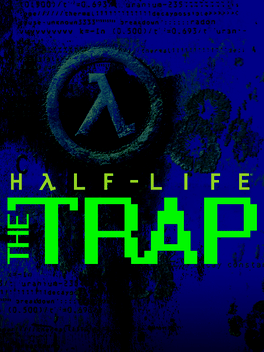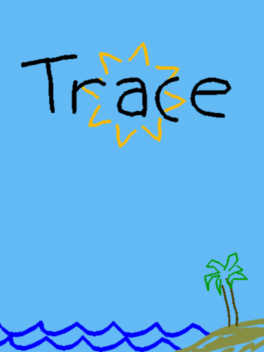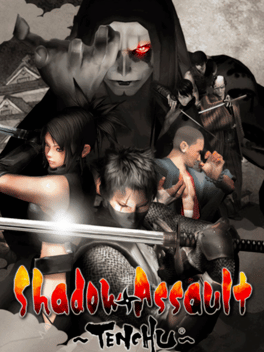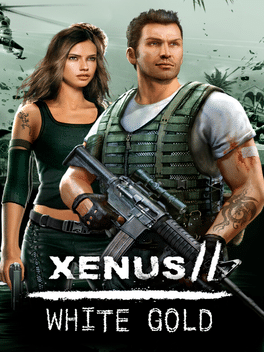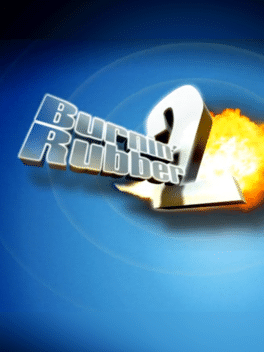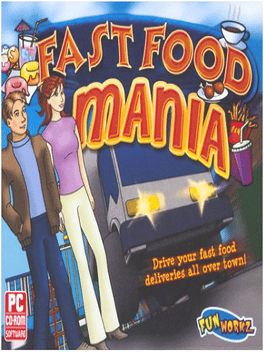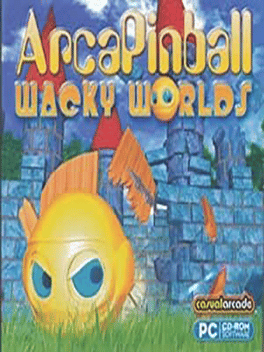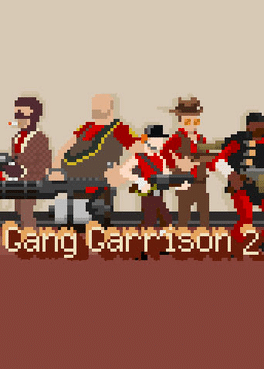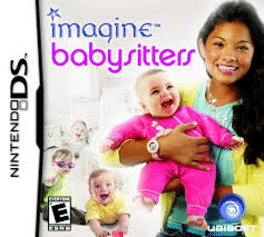New Games - Page 9907
-
The Trap
2008
The Trap
2008
The Trap is a mod featuring: The atmosphere of Valve's Portal game, many incredible puzzles, an achievement system, a long time to the end, and the trap is for your brain. -
Trace
2008
Trace
2008
Trace is a casual platformer where you draw your own path through the levels. Use the touch screen to draw platforms and navigate past obstacles to reach to goal at the end of each level. The game is easy to pick up and play anytime, and high scores add another level of challenge. -
Beat'n Groovy
2008
-
Shadow Assault: Tenchu
2008
Shadow Assault: Tenchu is a downloadable action puzzle video game developed and published by FromSoftware for the Xbox 360 on October 8, 2008. The game places the player in charge of one of several selectable characters from the Tenchu universe. Players are given a task to complete on the level, playing out much like Bomberman, where players must place ninja traps and other items on the field for enemies to run afoul of. Enemies in the game have a hit point total, displayed above their heads, and a line of sight grid, shown as yellow squares over the regular terrain. When a player is spotted by a unit, its sight turns to red squares, and it begins to chase the player. After a time, if the player has yet to be reacquired by the enemy, it will return to its original pathfinding. -
MLB Stickball
2008
MLB Stickball
2008
MLB Stickball was a MLB-licensed stickball video game published by 2K Sports for the Xbox 360 via Xbox Live Arcade. It was released on October 8, 2008, and removed from the Xbox live Marketplace in December 2014. -
Xenus 2: White Gold
2008
Xenus 2: White Gold
2008
star 5.4Caribbean islands; islands full of secrets, mystery and the spirit of romance. These islands are both beautiful and lethally dangerous. Centuries ago the waters of this region were teeming with pirates and adventurers... and frankly, not much has changed since then. Many books have been written about the Caribbean basin and many films have depicted it. Now you have a unique chance to visit these places yourself and personally witness the everyday life of drug-dealers, bandits and the Mafioso. You'll be able to take part in various mysterious events and get involved in fights between various hostile forces, or just admire the luscious tropical environment while drinking the traditional pirate's liquor - rum. The Caribs are waiting for you! -
NBA 2K9
2008
-
NBA Live 09
2008
-
NBA Live 09
2008
-
NBA Live 09
2008
-
Burnin' Rubber 2
2008
Burnin' Rubber 2
2008
Burnin' Rubber 2 is the sequel to the first game and is the second installment in the Burnin' Rubber series which was released on October 7, 2008. In Burnin' Rubber 2, the players race their way into five different types of maps and fifteen levels to unlock new races and new cars. Players will have to collect enough points from collectibles around the map and/or score by beating the race in a low amount of time, or winning the race with the car in good condition. An upcoming standalone version is supposed to release in the future. -
Fast Food Mania
2008
Fast Food Mania
2008
Fast Food Mania it's a time management game in which you race all over the town delivering orders to hungry customers. -
ArcaPinball: Wacky Worlds
2008
The gameplay of ArcaPinball: Wacky Worlds is similar to Arkanoid with Power-Ups but the playfield it's in 3D. -
Dress Up Rush
2008
Dress Up Rush
2008
Imagine running your own fashion boutique with cozy chairs, hot coffee, and ambient music. Meet Jane, a savvy fashionista, determined to make a name for herself in the fashion biz. Start small and provide top-notch service to clients -- then upgrade your boutique with more fitting rooms, a sleeker design, and a fat cash register. Sell the hottest collections and offer 130 distinct clothing options to customers. Can Jane manage the Dress Up Rush in this Time Management venture? -
Gang Garrison 2
2008
Gang Garrison 2
2008
Originally conceived for the 2008 TIGSource.com 'Bootleg Demake' competition, Gang Garrison 2 is a free multiplayer 'demake' of Valve's Team Fortress 2. Gang Garrison 2 presents the player with 9 unique classes to use in frenetic, cooperative multiplayer action in a stylish and unique 8-bit style. -
NBA 2K9
2008
NBA 2K9
2008
star 7.7Improved facial and skin textures, better uniforms, improved eye movement and more realistic crowd reactions bring the game alive like never before. Analyst Clark Kellogg and sideline reporter Cheryl Miller join color commentator Kevin Harlan to create one of the most knowledgeable broadcast teams in the game. End each quarter with enhanced, multiple angle replay highlights, and be rewarded like never before with all-new, true-to-life celebration sequences after you capture the NBA championship. -
Imagine: Fashion Designer New York
2008
Play as a young fashion designer starting a career in a famous fashion agency in New York City. Discover the glamorous world of fashion and create trendy designs to become the hippest fashion designer ever. -
Imagine: Babysitters
2008
Imagine: Babysitters
2008
Improve your babysitting skills and earn parents' trust in this entry to the Imagine franchise. -
NBA 09: The Inside
2008
NBA 09: The Inside
2008
star 6.9NBA 09: The Inside is the sequel to NBA 08 where once again the player can partake in a new chapter in "The Life" mode. This time around the player can take control of a created superstar (five total) with the ability to interact with three different characters and constantly change the storyline. The Team Progression System makes a return, rewarding the player for game exploration and completing certain achievements given to them throughout the game. Completing these tasks can unlock certain accessories that they can use for their created character, showing off their status. Players can also associate with various teammates and coaches, how they act towards these characters will determine their place with the team (being a team player and helping out others will have the coaches play you more and have create a bigger fan base and being a individual loner will alienate them from the team and have a smaller fan base). The obligatory game modes also exist in this version as well (Franchise, Exhibition) as well as u

